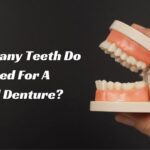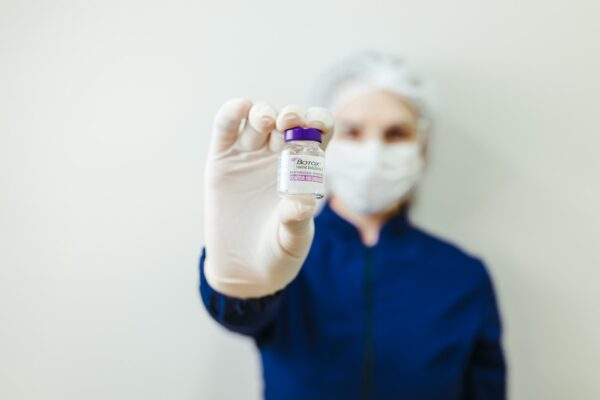It is crucial to know that washing hair after facelift. Undergoing facelift surgery is a significant decision for anyone looking to rejuvenate their appearance and combat the signs of aging. One aspect that often raises questions for patients is how to navigate washing their hair after facelift surgery. “Can I wash my hair after a facial?” is another common query among those who want to ensure the best care for their skin. However, if you’re careful to avoid getting your face wet, you can wash your hair immediately after a facial without causing harm.
Proper hair care is essential during the recovery period of washing hair after cataract operation. Also proper hair care maintains surgical results and promotes healing during the recovery of facelift surgery. And also proper hair care is an essential aspect of post-operative recovery following facelift surgery. Remember to consult with your surgeon for personalized advice and guidance throughout the recovery process.
With patience and attention to detail, you can maintain your surgical results and enjoy the full benefits of your facelift procedure. By following these ten tips, you can safely and effectively wash your hair while minimizing the risk of complications and promoting optimal healing. Now we are going to share a clear conception about washing hair after facelift surgery.

Understanding Facelift Surgery
Facelift surgery, also known as rhytidectomy, is a cosmetic procedure aimed at reducing the signs of aging on the face and neck. Over time, factors such as sun exposure, gravity, and the natural aging process can lead to sagging skin, deepening creases, and the formation of wrinkles. A facelift targets several common concerns associated with facial aging the following.
- As skin loses its elasticity over time, it can begin to sag, particularly around the cheeks, jawline, and neck.
- Wrinkles and creases, such as nasolabial folds (smile lines) and marionette lines (lines extending from the corners of the mouth), can become more prominent with age.
- Muscles in the face and neck may weaken over time, contributing to a less defined jawline and neck contour.
- The skin and tissue along the jawline can sag, creating the appearance of jowls or a less defined jawline.
- Fatty deposits can accumulate in various areas of the face, contributing to a fuller or aged appearance.
After facelift surgery, patients typically experience bruising, swelling, and discomfort, which can be managed with medication and proper post-operative care. Most individuals can return to light activities within a week or two, although strenuous exercise and sun exposure should be avoided for several weeks.
Importance of Washing Hair After Facelift Surgery
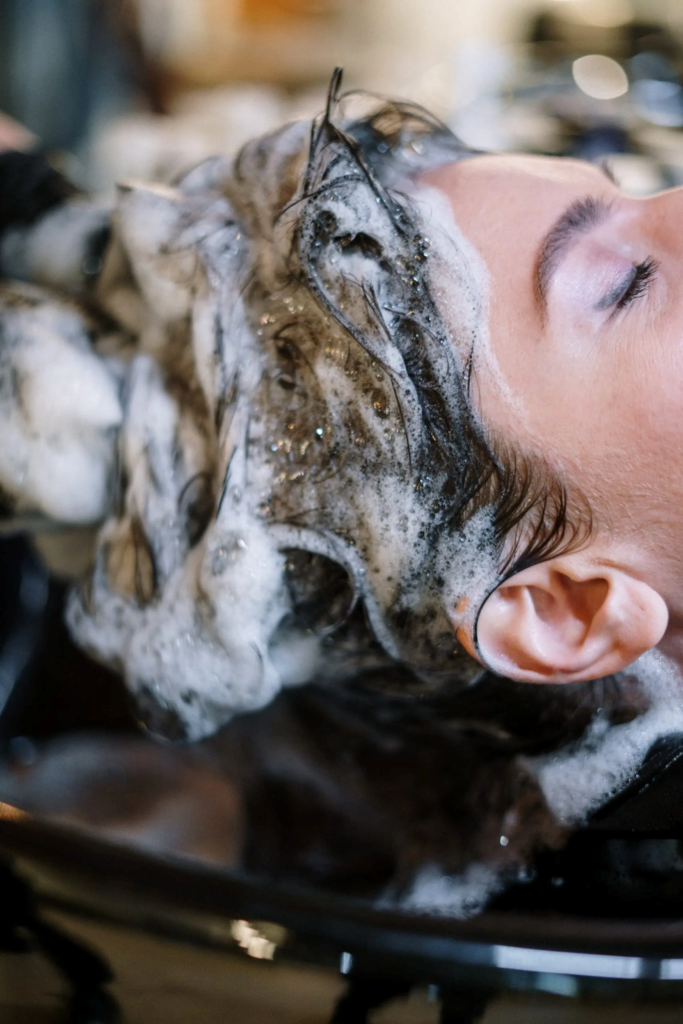
Washing hair after facelift surgery is crucial for maintaining scalp health and promoting proper healing. Do I have to wash my hair before surgery? It is a common question patients ask before undergoing a procedure. Ensuring cleanliness before surgery can help reduce the risk of infection and ensure a smooth surgical process. Failure to cleanse the scalp can lead to the buildup of oils, blood, and debris, potentially causing discomfort, infection, or prolonged healing.
If you determine to go for surgery you have to know how to wash hair without bending and how to wear your hair for surgery. Regular washing helps remove any residue, keeping the area clean and reducing the risk of infection. Additionally, gently massaging the scalp while washing can improve blood circulation, aiding in the healing process and reducing swelling.
Furthermore, clean hair promotes a sense of normalcy and well-being for the patient, contributing to their overall satisfaction with the surgical outcome. However, it’s essential to follow post-operative care instructions provided by the surgeon, including any specific guidelines for hair washing to avoid disrupting incisions or causing harm to the delicate healing tissue.
Why Washing Hair After a Facelift Surgery Requires Special Attention
Washing hair after a facelift surgery necessitates special attention due to several critical factors.
- Firstly, the incisions made during the procedure are delicate and require proper care to prevent infection or disruption of the healing process.
- Water and shampoo can potentially irritate these incisions, leading to complications such as inflammation or delayed healing.
- Moreover, the hairline is often adjusted during a facelift, meaning the hair follicles are in a sensitive state.
- Excessive manipulation or harsh chemicals from regular shampoos can cause irritation, inflammation, or even damage to the newly positioned hairline.
- Additionally, after a facelift, patients may experience swelling or tenderness in the facial area. It makes it challenging to maneuver washing hair after facelift surgery.
- Special care must be taken to avoid any strain or pressure on the facial tissues while washing the hair to prevent discomfort or exacerbation of swelling.
- Therefore, following the surgeon’s specific instructions for hair washing post-facelift is crucial to ensure proper healing, minimize complications, and maintain the aesthetic results of the surgery.
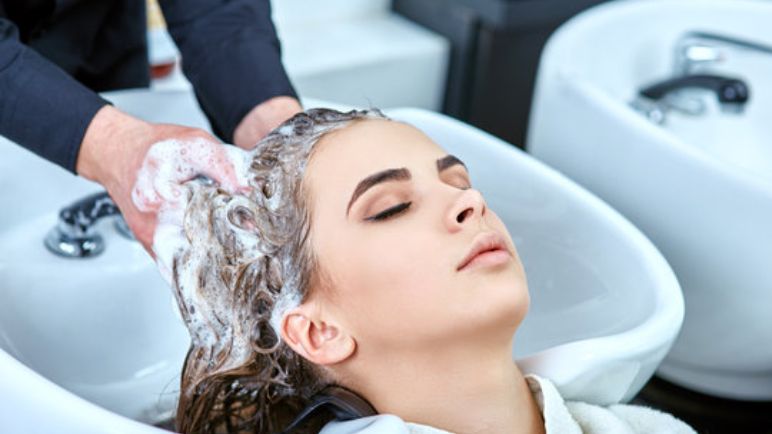
When to Start Washing Hair
Washing hair after facelift it’s crucial to follow specific guidelines to promote proper healing and prevent complications. Facelift surgery is a delicate procedure that requires careful post-operative care, including hair washing. The timing for resuming hair washing after a facelift varies depending on individual healing and surgeon’s recommendations.
Generally, patients are advised to wait for about 48 hours before washing their hair after a facelift to allow initial healing and reduce the risk of complications. Understanding how to wash hair after rhinoplasty is essential for promoting proper healing and avoiding complications. When ready, you should use a gentle shampooing technique, being cautious not to apply pressure to the nose during the process.
Should I wash my hair before surgery? It is a common query patients have before a surgical procedure. I advise you to follow specific pre-operative instructions provided by the medical team. Some surgeons may suggest waiting longer, up to a week, particularly if there are concerns about incision sites or drainage tubes. Contact your surgeon promptly for guidance and reassurance if you have any concerns or experience unusual symptoms during the healing process.
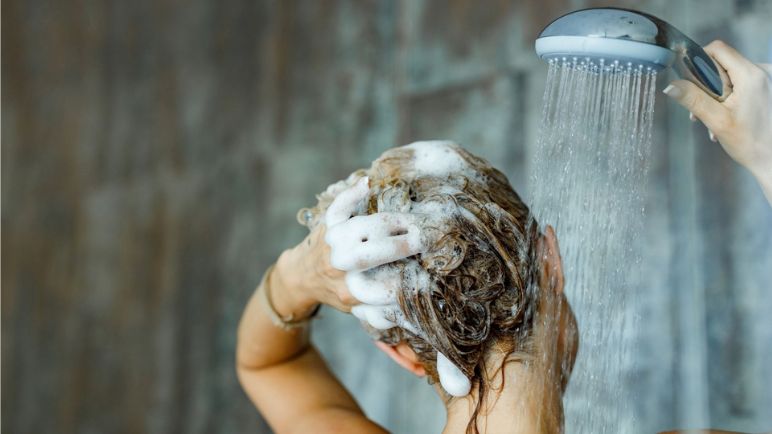
10 Tips to Follow While Washing Hair After Facelift Surgery
These 10 tips offer crucial guidance for post-operative care to ensure optimal healing and results. Following these tips can help minimize discomfort and promote a smoother recovery process. Consulting with your surgeon for personalized advice based on your specific procedure is also recommended to address any concerns or unique considerations.
Here are ten tips to follow when washing hair after facelift surgery.
- Consult your surgeon before washing your hair, it’s crucial to know when it’s safe. Your surgeon will provide personalized guidelines based on your specific procedure and healing progress.
- Typically, surgeons advise waiting at least 48 hours after facelift surgery before attempting to wash your hair. This waiting period allows initial healing to take place and reduces the risk of disturbing incisions or causing irritation.
- Choose mild, fragrance-free shampoo and conditioner formulated for sensitive or post-operative skin. Avoid products containing harsh chemicals or exfoliants that may irritate the delicate skin around incisions.
- When washing your hair, you can try a gentle touch to avoid putting unnecessary pressure on the surgical area. Massage your scalp and hair with light, circular motions, being careful to avoid rubbing or pulling near the incisions.
- Pay close attention to the location of your incisions and avoid direct contact with them while washing your hair. Minimize manipulation around these areas to prevent disruption of healing tissues.
- Opt for lukewarm water rather than hot water when washing your hair. Hot water can increase blood flow to the scalp and may exacerbate swelling or discomfort, especially in the early stages of recovery.
- After washing, pat your hair dry with a soft towel instead of rubbing it vigorously. Avoid using a hairdryer on high heat settings, as this can cause additional stress to the skin and potentially disrupt healing.
- Refrain from pulling your hair back into tight ponytails, braids, or other hairstyles that exert pressure on the scalp. Opt for loose styles that allow the skin to breathe and minimize tension in the surgical area.
- If using styling products or tools, take care to avoid direct contact with incisions. Be cautious when brushing or combing near these areas, opting for gentle detangling techniques to prevent accidental trauma.
- Adhere to all post-operative care instructions provided by your surgeon, including any specific guidelines for hair washing and maintenance. These instructions are designed to optimize healing and ensure the best possible outcome from your facelift surgery.
Avoiding Certain Hair Care Products
In the pursuit of healthy hair, it’s crucial to be mindful of the products we use. These can be avoided for washing hair after facelift. Some hair care products can do more harm than good, leading to various issues like dryness, breakage, and scalp irritation.
- Commonly found in shampoos, sulfates can strip the hair of its natural oils, leading to dryness and irritation.
- Parabens can disrupt hormone balance and potentially lead to hair loss, it is used as a preservative.
- Silicones can also cause buildup, weighing down the hair and making it dull over time, while they can provide temporary smoothness and shine,
- Alcohol-based products can be drying to both the hair and scalp, leading to increased brittleness and breakage.
- Synthetic fragrances can irritate the scalp and trigger allergic reactions, leading to discomfort and inflammation.
By avoiding these harmful ingredients and opting for natural or sulfate-free alternatives, individuals can maintain healthier, stronger hair and promote overall scalp health.
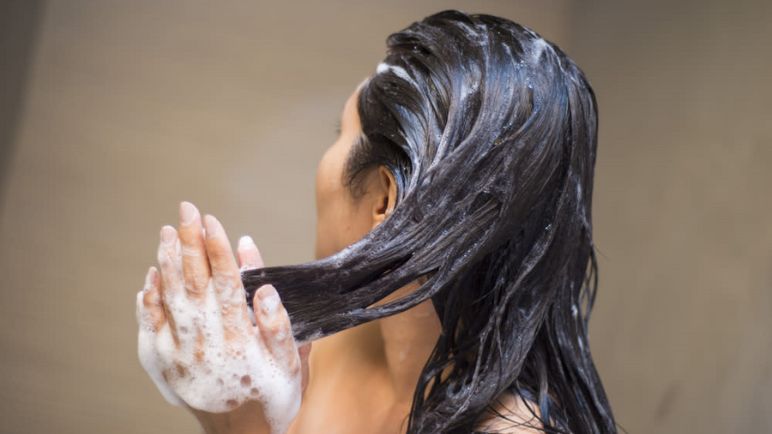
How to Protect Incisions During Washing
Consider following your surgeon’s instructions meticulously while washing hair after facelift. Patting the area dry with a clean towel rather than rubbing can further reduce the risk of damage to the incision site. You must abide by the following instructions.
- Ensure that the incision site remains dry while washing hair after facelift to prevent moisture-related complications.
- Invest in a waterproof cover or adhesive bandage specifically designed to protect incisions during washing.
- Avoid scrubbing or rubbing the incision area vigorously while washing to prevent irritation or damage.
- Opt for a gentle, unscented soap to cleanse the surrounding skin without causing irritation or discomfort.
- After washing, gently pat the area around the incision dry with a clean, soft towel. Avoid rubbing or wiping vigorously.
- When possible, try to minimize direct contact between the incision and water by using a sponge or cloth to wash surrounding areas.
- Always follow the specific instructions provided by your healthcare provider regarding incision care and washing techniques.
- Keep an eye on the incision site for any signs of infection, such as increased redness, swelling, warmth, or drainage, and report any concerns to your healthcare provider promptly.
Risks of Improper Hair Washing Post-Surgery
Addressing these risks through proper post-surgery hair care routines is essential for promoting healing and overall well-being. These are crucial issues for washing hair after facelift. So, addressing these risks is essential to know for post-operative care.
- Surgical wounds near the scalp are particularly vulnerable to infections if not kept clean. Accumulated sweat, oil, and debris can create a breeding ground for bacteria, leading to infections.
- The build-up of dirt and oils can lead to scalp irritation and itching, causing discomfort. Scratching the scalp can potentially disrupt healing wounds or stitches.
- Unclean hair can introduce contaminants that hinder the healing process. Proper blood circulation to the scalp, necessary for healing, may be compromised by debris and oils.
- Unwashed hair can become greasy and uncomfortable, affecting overall well-being and recovery.
- Dirty hair may contribute to feelings of uncleanliness, affecting mental health and recovery morale.
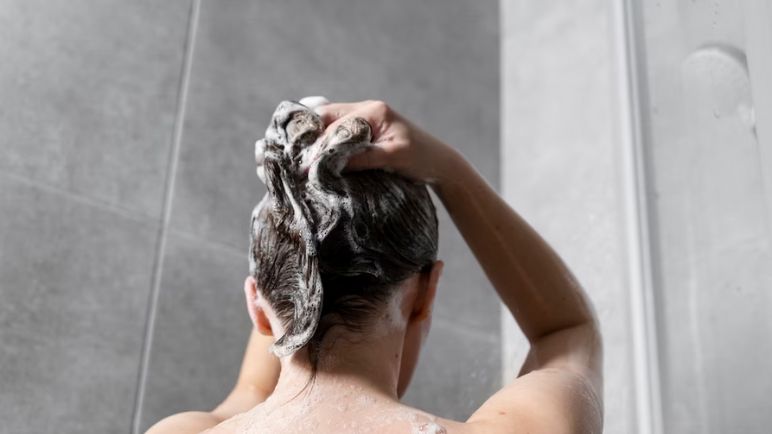
Hair Washing Routine Post-Recovery
After recovering from illness or surgery, it’s essential to establish a gentle and effective hair-washing routine to promote overall well-being and comfort. By following these steps, individuals can establish a gentle and effective of washing hair after facelift recovery. It can promote scalp health and overall well-being.
- Begin by assessing the scalp’s condition post-recovery to determine if any special care is needed, such as addressing dryness or sensitivity.
- Opt for a mild, fragrance-free shampoo formulated for sensitive or delicate hair and scalp. Avoid harsh chemicals that may irritate the scalp.
- Depending on individual needs, establish a suitable frequency for washing hair post-recovery. This may range from every other day to twice a week, depending on scalp condition.
- Use lukewarm water to wet hair and gently massage the scalp with your fingertips to cleanse and stimulate circulation. Avoid vigorous scrubbing to prevent discomfort or irritation.
- Follow up with a lightweight conditioner or hair mask to nourish and hydrate strands, focusing on mid-lengths to ends. Rinse thoroughly to avoid residue buildup.
- Allow hair to air dry naturally or gently pat dry with a soft towel to minimize friction and prevent breakage.
- Limit the use of heat styling tools to prevent further stress on recovering hair. Opt for air drying or use heat-protectant products if styling is necessary.
- Maintain regular trims to remove split ends and promote healthy hair growth. Stay hydrated and maintain a balanced diet to support overall hair health.
- How to wash hair after neck surgery requires careful consideration to avoid discomfort. Patients often find it helpful to use a specialized neck support pillow. Consult with your healthcare professional for this complication.
Conclusion
While it may seem like a small detail, washing hair after facelift surgery is crucial for promoting healing. Maintaining proper hair care after facelift surgery is crucial for optimal healing and preserving the results of the procedure. While it’s natural to be cautious about washing the hair after surgery, following the surgeon’s instructions diligently is paramount.
Gradually reintroducing gentle hair-washing techniques, can promote cleanliness without disrupting the delicate healing process around the surgical site. You should also know that washing hair after cataract surgery. Moreover, washing hair after facelift strategies like tilting the head back or using a handheld showerhead can minimize strain on the facial muscles and incisions. Remembering to be gentle, patient, and mindful of any discomfort or swelling is essential.
When can I wash my hair after stitches? Yes, it is the most crucial question to ask your surgeon. It helps to solve your confusion about your surgical problems. By adhering to post-operative hair care guidelines, you can ensure your comfort and safety from your facelift result. Effective post-surgery hair care serves as an integral part of the holistic recovery process. Always follow your surgeon’s recommendations to optimize your post-operative care routine.


